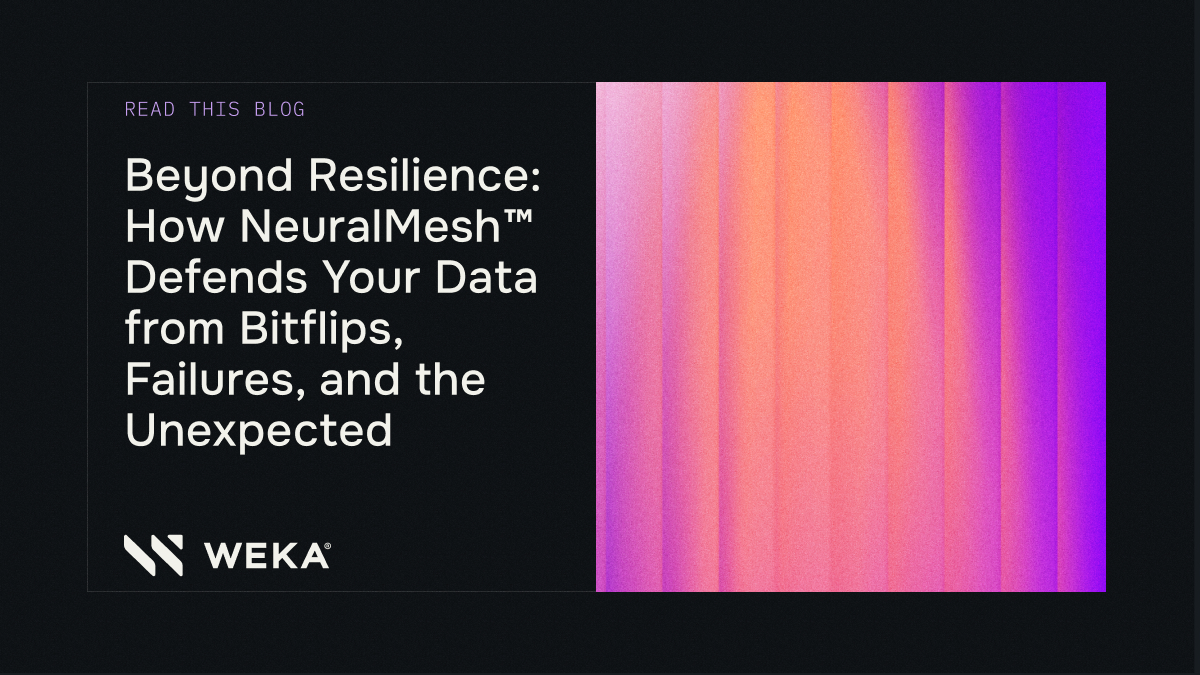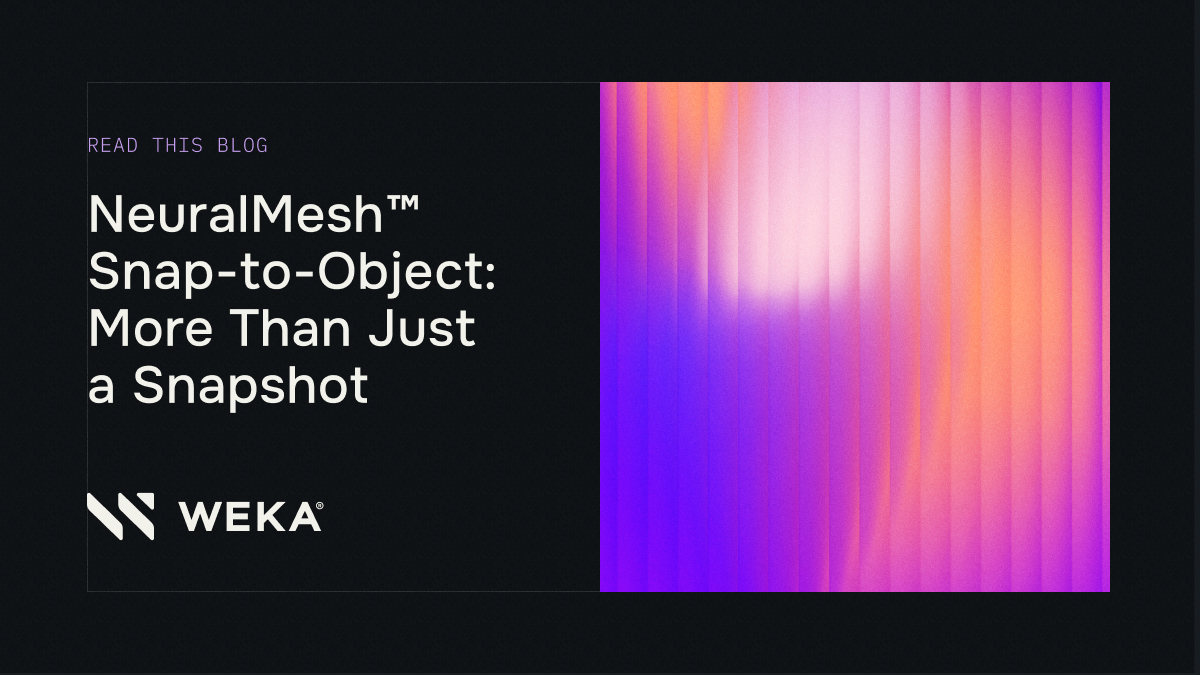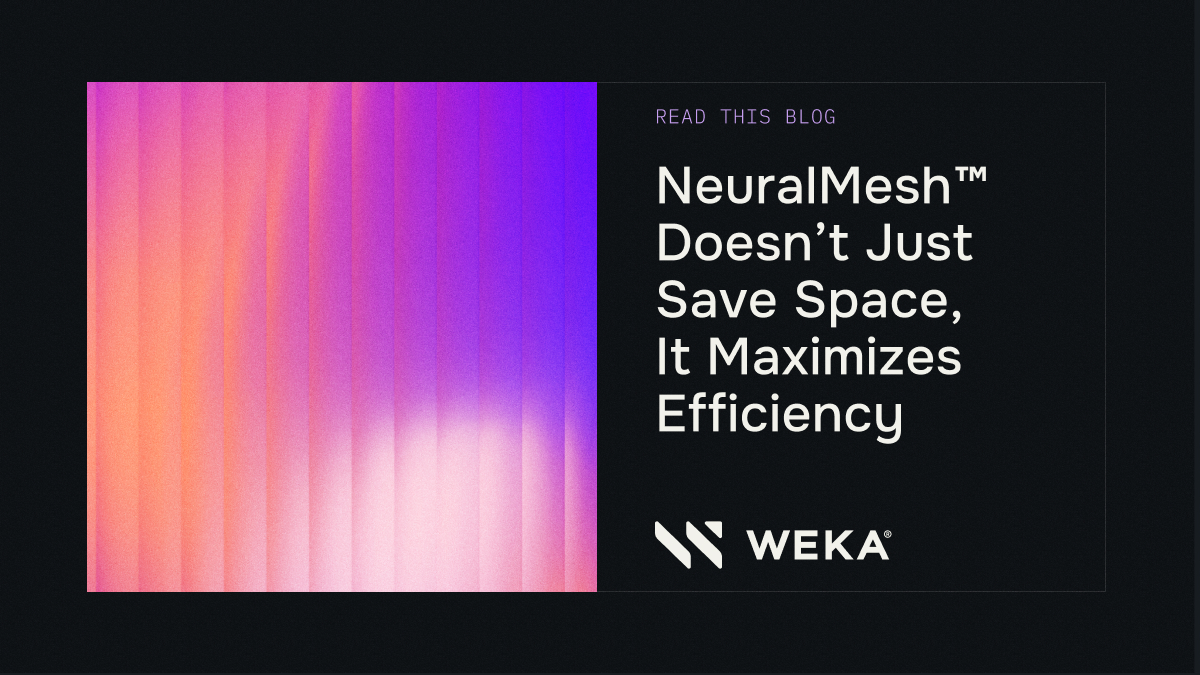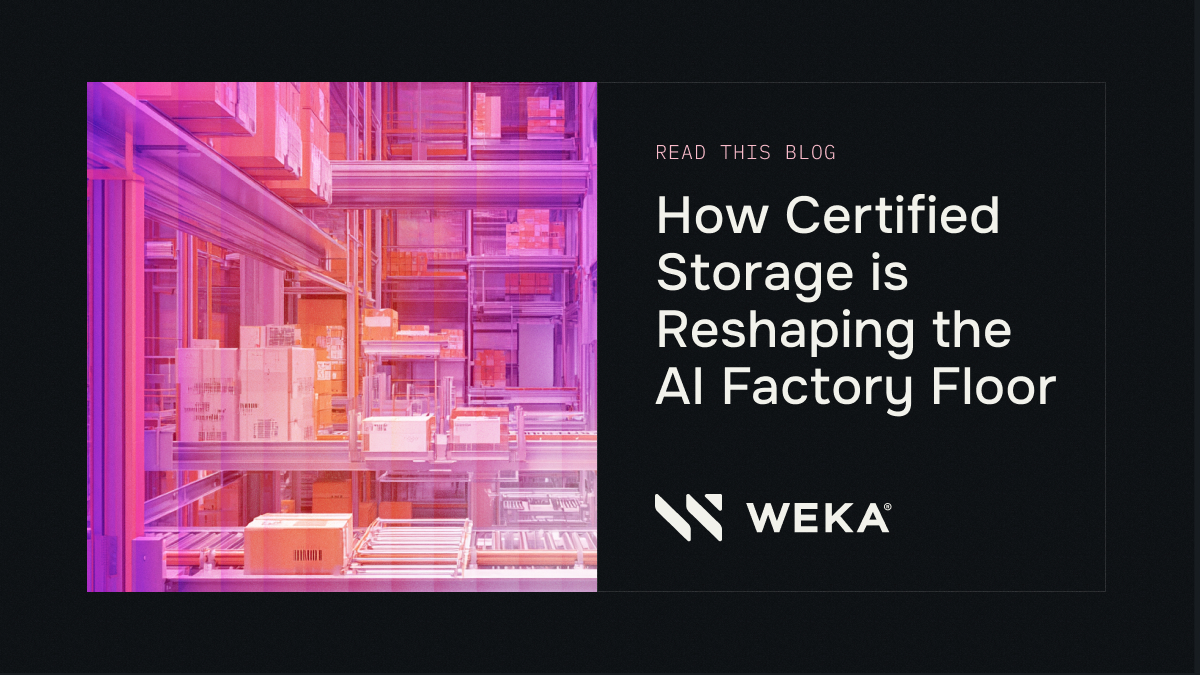Beyond Resilience: How NeuralMesh Defends Your Data from Bitflips, Failures, and the Unexpected


In my last post, I talked about why resiliency is so much more than just “rebuild times”—and how NeuralMesh™ was engineered from the ground up to recover smarter, not just faster. But there’s another layer to this story, and it’s just as important: data integrity.
After all, resilience means nothing if the data you’re recovering is corrupted or incomplete. Silent data corruption, which can be introduced by a network glitch or storage media fault, doesn’t trigger any alerts or messages that something has gone wrong but can have serious impact on downstream processes.
So let’s take a look under the hood and explore how NeuralMesh protects your data from end to end—from the moment it’s written to the moment it’s read again, possibly years later, on a different node, in a different datacenter, or in a different cloud.
End-to-End Data Integrity with Checksums
Every block of data in NeuralMesh is protected with a checksum, and those checksums are stored separately from the data itself. This makes it possible to detect corruption early and unambiguously. Whether you’re reading a fresh write or a cold archive block, the system validates checksums every time.
Corruption? Bitflip? SSD-level glitch? NeuralMesh detects it and automatically kicks off recovery using redundant data—no user intervention required.
And since writes are only acknowledged after they’ve been journaled, your data is already protected before the system says “success.” Even a full power failure won’t leave your files in limbo.
Distributed Data + Metadata Protection
Most systems protect your data. NeuralMesh protects everything.
Both data and metadata are evenly distributed across the cluster and protected with erasure coding-style parity. You choose the protection level at cluster formation (+2, +4, etc.) which defines how many simultaneous drive or node failures you can tolerate without data loss.
And unlike traditional file systems that treat metadata as an afterthought, NeuralMesh treats metadata as first-class data—equally protected and recoverable.
Journaling for Rapid Recovery
In the event of a crash or sudden power loss, there’s no need for a lengthy file system consistency check (FSCK) scan. NeuralMesh journals writes before acknowledging them, so recovery is fast, safe, and deterministic. Restart the system, and you’re instantly back in action.
Automated Scrubbing and Integrity Checks
Silent corruption is the enemy. NeuralMesh scrubs every block on a regular cadence, proactively hunting for issues before they become a problem.
There’s also a full-spectrum integrity validation process—think of it like FSCK, but smarter—that verifies block IDs, parity, metadata, and system structures. It’s like preventive maintenance for your entire AI storage fabric.
Surviving Bitflips and Stripe Corruption
Bitflips happen. SSDs lie. Cosmic rays don’t care about your SLA.
NeuralMesh uses intelligent algorithms (yes, one is named “Hail Mary”) to recover even when multiple blocks in a stripe are corrupted. It doesn’t just rely on checksums—it validates known data patterns and specific prefixes to tell the difference between valid and garbage data.
As long as you’ve got the configured parity, NeuralMesh can automatically reconstruct and repair what went wrong.
Hardware-Level Protection and Safe Defaults
NeuralMesh goes all the way down the stack. It actively manages hardware-level behaviors like drive error recovery timeouts (TLER) and periodic block header rewrites to reduce the chance of undetected corruption.And because safety should never be optional, integrity checks are always enabled by default.
Built to Avoid Single Points of Failure
NeuralMesh avoids data locality by design, distributing risk across the cluster and reducing the blast radius of any single component failure. With intelligent failure domains, one rack or node going down won’t take your data with it.
It’s fault tolerance, architected in—not bolted on.
TL;DR: Trust but Verify (Automatically)
NeuralMesh doesn’t just help you bounce back from failure—it ensures that what you bounce back to is accurate, intact, and trustworthy.
It’s a full-stack, AI-native approach to data integrity:
- Checksums on every block
- Erasure coding-style distributed protection
- Write-ahead journaling
- Automated scrubbing and error correction
- Hardware-aware safeguards
- Default-on safety mechanisms
Resiliency helps you recover. Integrity ensures what you recover is right.
NeuralMesh gives you both—because in AI infrastructure, science, and critical enterprise computing, performance is just table stakes. Trustworthy data is everything.





